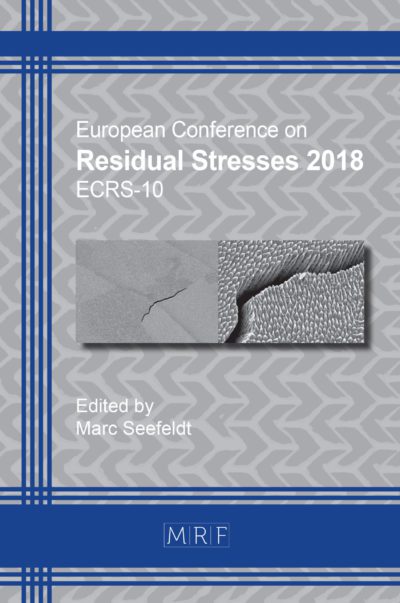Crush core forming: An innovative technology to manufacture structural sandwich parts with variable thickness
SORRENTINO Luca, BELLINI Costanzo, PARODO Gianluca, RUBINO Felice
download PDFAbstract. Sandwich structures, constituted in honeycomb core and skin in composite material, are usually employed to produce parts having a constant thickness or simple shape. Indeed, sandwich components with complex shapes, curvature or varying thickness are costly to manufacture due to the preliminary machining operations required on the core prior the molding process. A novel approach to manufacture complex sandwich structures, knows as Crush Core Forming (CCF) process, consisting in press-forming simultaneously the core material and the skins into the shape is under study. Such a method is potentially able to increase the production rate and lowering the overall costs. The present work aims to develop an experimental route to produce sandwich panels by means of CCF process and build a FE model of the forming process and validate it against the experimental studies. Experimental study was conducted to derive the fundamental parameters and properties for core and skins to be added in the FEM model of the CCF process. After, the numerical model was implemented to simulate the forming of the core and skins. Finally, a laboratory scale sandwich part was produced to validate the model outputs and assessing the reliability of the proposed approach.
Keywords
Crush Core Forming, Sandwich Structures, Variable Thickness, Composite Materials
Published online 4/19/2023, 8 pages
Copyright © 2023 by the author(s)
Published under license by Materials Research Forum LLC., Millersville PA, USA
Citation: SORRENTINO Luca, BELLINI Costanzo, PARODO Gianluca, RUBINO Felice, Crush core forming: An innovative technology to manufacture structural sandwich parts with variable thickness, Materials Research Proceedings, Vol. 28, pp 399-406, 2023
DOI: https://doi.org/10.21741/9781644902479-44
The article was published as article 44 of the book Material Forming
![]() Content from this work may be used under the terms of the Creative Commons Attribution 3.0 license. Any further distribution of this work must maintain attribution to the author(s) and the title of the work, journal citation and DOI.
Content from this work may be used under the terms of the Creative Commons Attribution 3.0 license. Any further distribution of this work must maintain attribution to the author(s) and the title of the work, journal citation and DOI.
References
[1] F. Rubino, A. Nisticò, F. Tucci, P. Carlone, Marine Application of Fiber Reinforced Composites: A Review, J. Mar. Sci. Eng. 8 (2020) 26. https://doi.org/10.3390/jmse8010026
[2] J. Kratz, P. Hubert, Processing out-of-autoclave honeycomb structures: Internal core pressure measurements, Compos Part A Appl. Sci. Manuf. 42 (2011) 1060-1065. https://doi.org/10.1016/j.compositesa.2011.04.009
[3] P. Boisse, R. Akkerman, P. Carlone, L. Kärger, S. v. Lomov, J.A. Sherwood, Advances in composite forming through 25 years of ESAFORM, Int. J. Mater. Forming 15 (2022) 39. https://doi.org/10.1007/s12289-022-01682-8
[4] F. Rubino, V. Paradiso, P. Carlone, Flow monitoring of microwave pre-heated resin in LCM processes, in: AIP Conf Proc, 2017: pp. 030017. https://doi.org/10.1063/1.5008004
[5] F. Rubino, F. Tucci, V. Esperto, P. Carlone, Filling Time Reduction in Liquid Composite Molding Processes, J. Compos. Sci. 6 (2022) 222. https://doi.org/10.3390/jcs6080222
[6] P. Carlone, F. Rubino, V. Paradiso, F. Tucci, Multi-scale modeling and online monitoring of resin flow through dual-scale textiles in liquid composite molding processes, Int. J. Adv. Manuf. Technol. 96 (2018) 2215-2230. https://doi.org/10.1007/s00170-018-1703-9
[7] F. Rubino, V. Esperto, F. Tucci, P. Carlone, Flow enhancement in liquid composite molding processes by online microwave resin preheating, Polym. Eng. Sci. 60 (2020) 2377-2389. https://doi.org/10.1002/pen.25477
[8] M. Jaafar, H. Makich, M. Nouari, A new criterion to evaluate the machined surface quality of the Nomex® honeycomb materials, J. Manuf. Process. 69 (2021) 567-582. https://doi.org/10.1016/j.jmapro.2021.07.062
[9] C. Bellini, R. Borrelli, V. Di Cocco, S. Franchitti, F. Iacoviello, L. Sorrentino, Titanium lattice structures manufactured by EBM process: Effect of skin material on bending characteristics, Eng. Fract. Mech. 260 (2022) 108180. https://doi.org/https://doi.org/10.1016/j.engfracmech.2021.108180
[10] C. Bellini, R. Borrelli, V. Di Cocco, S. Franchitti, F. Iacoviello, L. Sorrentino, Bending properties of titanium lattice structures produced by electron beam melting process, Fatigue & Fracture of Engineering Materials & Structures 44 (2021) 1961-1970. https://doi.org/https://doi.org/10.1111/ffe.13468
[11] S. Chen, O.P.L. McGregor, A. Endruweit, L.T. Harper, N.A. Warrior, Simulation of the forming process for curved composite sandwich panels, Int. J. Mater. Forming 13 (2020) 967-980. https://doi.org/10.1007/s12289-019-01520-4
[12] Z.-Y. Cai, X. Zhang, X.-B. Liang, Multi-point forming of sandwich panels with egg-box-like cores and failure behaviors in forming process: Analytical models, numerical and experimental investigations, Mater. Des. 160 (2018) 1029–1041. https://doi.org/10.1016/j.matdes.2018.10.037
[13] C.C. Besse, D. Mohr, Plasticity of formable all-metal sandwich sheets: Virtual experiments and constitutive modeling, Int. J. Solids. Struct. 49 (2012) 2863-2880. https://doi.org/10.1016/j.ijsolstr.2012.04.032
[14] K.P. Jackson, J.M. Allwood, M. Landert, Incremental forming of sandwich panels, J. Mater. Process. Technol. 204 (2008) 290-303. https://doi.org/10.1016/j.jmatprotec.2007.11.117
[15] H. Nassar, M. Albakri, H. Pan, M. Khraisheh, On the gas pressure forming of aluminium foam sandwich panels: Experiments and numerical simulations, CIRP Annals. 61 (2012) 243-246. https://doi.org/10.1016/j.cirp.2012.03.116
































